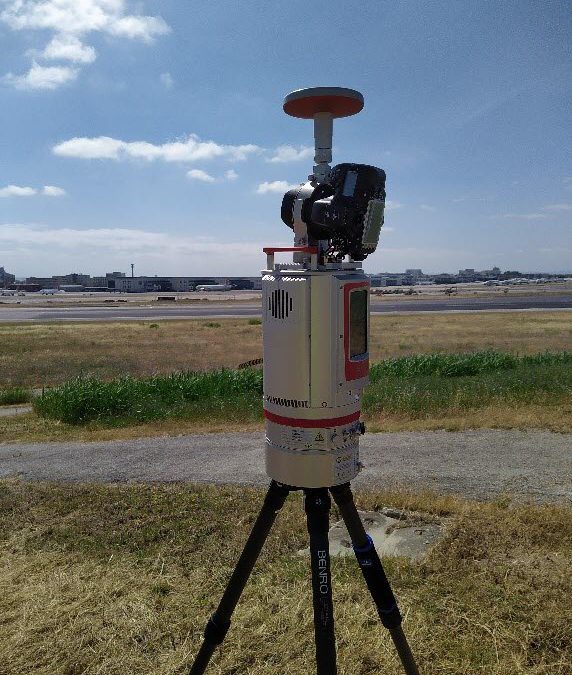Scanners with the best efficiency/price trade-off were tested in relevant environment of the Lisbon airport.
The Persistent Track Monitoring project focuses on an innovative airport runway monitoring based on affordable commercial-off-the-shelf (COTS) terrestrial laser scanning (TLS) module for identification of risks related to the deformation of the runway pavement, large-scale and local (cracks, spalling, rutting, etc.) and eventual presence of foreign object debris (FOD). Due to direct measurements, the laser scanning approach enables the user to analyse substantial runway areas within a short period of time, constituting the most viable solution for critical applications.
For the current technical solution, of primary importance is the possibility of obtaining the 4D point cloud characterization (x, y, z, I), where the fourth dimension is the measure of its intensity I, defined, in its turn by the geometry (distance and the angle of incidence) and local material properties (texture, roughness, colour and albedo).
Performing the survey, the laser scanner must be capable to maintain the point density on the runway high enough to detect FOD and assess the thickness of the eventual water layer. This is not an easy task due to a series of technical limitations that the airport environment imposes on the location of the TLS observation point to comply with the safety rules of the airport operations. The TLS deployment must respect the runway protection zones. A compromise must be found between the desired elevation/distance to the runway and the numerous placement restrictions (due to the safety regulations) aiming at increasing the density of points via:
- minimization of the distance between the TLS and the runway area to be analysed;
- maximization of the angle of incidence of the laser beam.
With the existing limitations, regarding the distance of the TLS to the runway and the height at which the sensor equipment can be placed (using a mast or a tower), one has to carry out the laser scanning using inevitably small angles of incidence (Fig. 1). This immediately brings about a number of difficulties, such as the loss of points due to the small reflectivity of the pavement with very oblique incidence of the laser beam.
One more problem is related to a further decrease of the runway reflectivity for wet or water-covered pavements, a common feature of laser scanning using eye-safe wavelengths, which are characterized by very high absorption in water.
All these problems testify to the extreme importance of the scanner range in these adverse conditions. The requirement for acceptable range translates into the requirement of high laser impulse energy, sufficient to produce the detectable echo, even in the condition of low target reflectivity. The maximum energy mode of laser pulses requires additional cooling, which translates into the requirement for a longer interval between pulses, that is, a lower frequency of pulse repetition. At the same time, more introduction of more powerful lasers augment the price of the TLS unit, what can make the use of laser scanning economically inviable.
To address the above challenges,
- extensive theoretical estimations were carried out, assessing a wide range of available industrial laser scanners from the viewpoint of their suitability for the application,
- the scanners with the best efficiency/price trade-off were tested in relevant environment of the Lisbon airport.
Extensive experimental data collected during the field tests provide evidence that the mass-production middle-range scanner by RIEGL VZ-400i is capable to provide the runway scanning with the required accuracy and point density.


